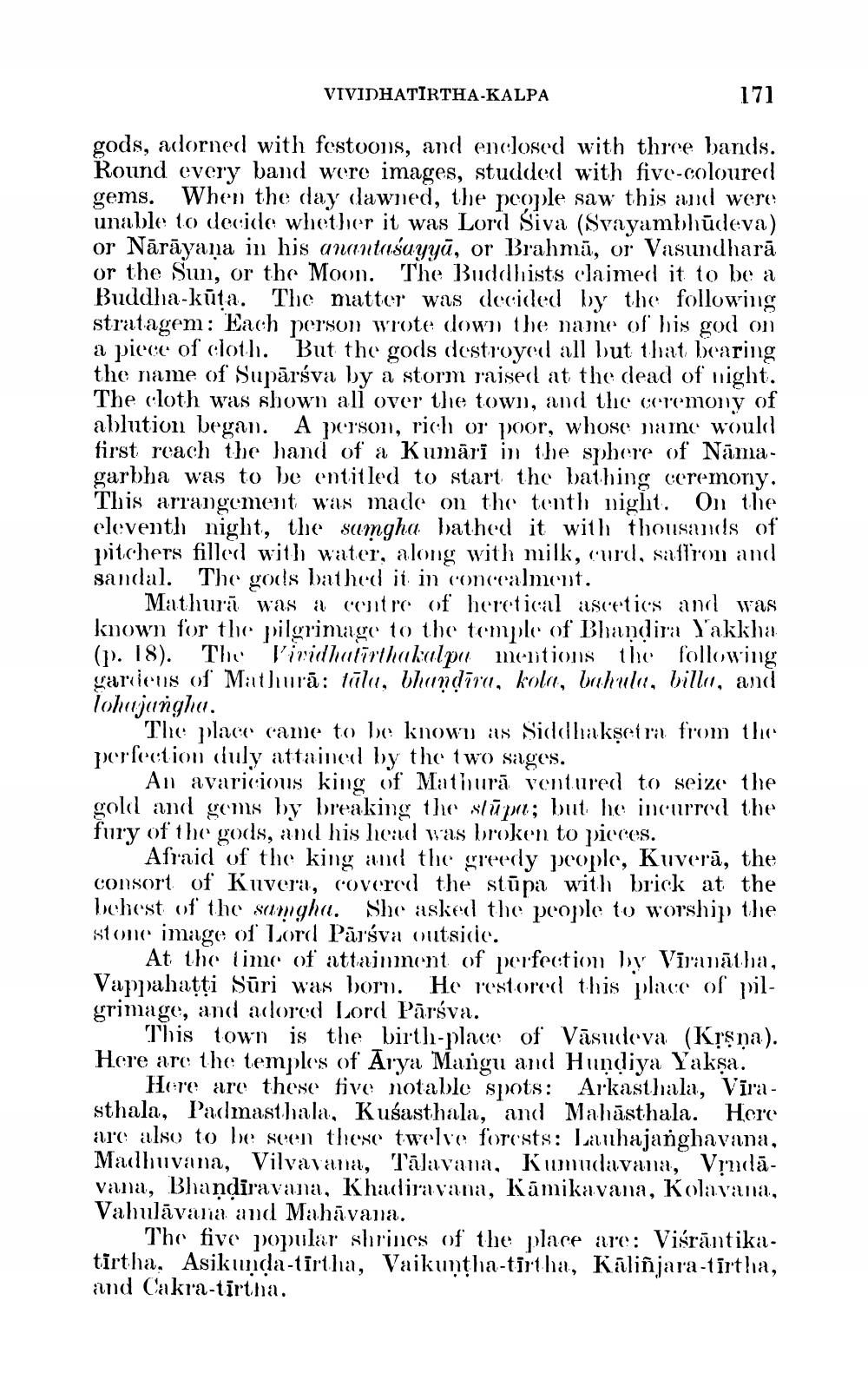________________
VIVIDHATIRTHA-KALPA
171
gods, adorned with festoons, and enclosed with three bands. Round every band were images, studded with five-coloured gems. When the day dawned, the people saw this and were unable to decide whether it was Lord Siva (Svayambhūdeva) or Nārāyana in his anantaśuyyā, or Brahmā, or Vasundharā or the Sun, or the Moon. The Buddhists claimed it to be a Buddha-kūta. The matter was decided by the following stratagem: Each person wrote down the name of his god on a piece of cloth. But the gods destroyed all but that bearing the name of Supārsva by a storm raised at the dead of night. The cloth was shown all over the town), and the ceremony of ablution began). A person, rich or poor, whose name would first reach the hand of a Kumāri in the sphere of Nāmagarbha was to be entitled to start the bathing ceremony. This arrangement was made on the tenth night. On the eleventh night, the samgha bathed it with thousands of pitchers filled with water, along with milk, (urd, saffron and sandal. The gods bathed it in concealment.
Mathură was a centre of heretical ascetics and was known for the pilgrimage to the temple of Bhandira Yakkha (1). 18). The Viridhatirthakalpu mentions the following garicus of Mathurā: tūlu, bhandira, kola, bahulu, billu, and lohujunghu.
The place came to be know its Siddhaksetra from the perfection duly attained by the two sages.
An avaricious king of Mathurā ventured to seize the gold and gems by breaking the stūpir; but he incurred the fury of the gods, and his head was broken to pieces.
Afraid of the king and the greedy people, Kuverā, the consort of Kuvera, covered the stūpa with brick at the behest of the samgha. She asked the people to worship thie stone image of Lord Pārsva outsicie.
At the time of attainment of perfection by Viranātha, Vappahatti Sūri was bor. He restored this place of pilgrimage, and adored Lord Pārsva.
This town is the birth-place of Vasudeva (Krsna). Here are the temples of Arya Mangu and Hundiya Yakşa.
Here are these five notable spots: Arkasthala, Vīrasthala, Padmasthala, Kuśasthala, and Mahāsthala. Here are also to be seen these twelve forests: Lauhajanghavana, Madhuvana, Vilvavana, Tālavana, Kumudavana, Vindāvana, Bhandīravana, Khadiravana, Kāmikavana, Kolayana, Vahulāvalia and Mahāvana.
The five popular shrines of the place are: Višrāntikatirtha, Asikunda-tirtha, Vaikuntha-tirtha, Kāliñjara-tirtha, and Cakra-tirtha.




